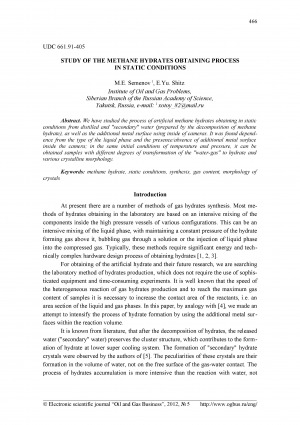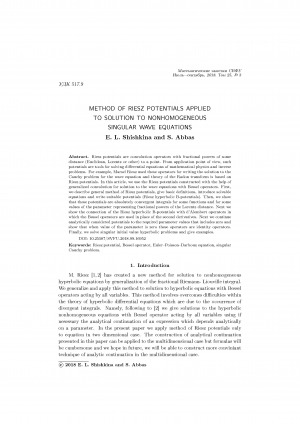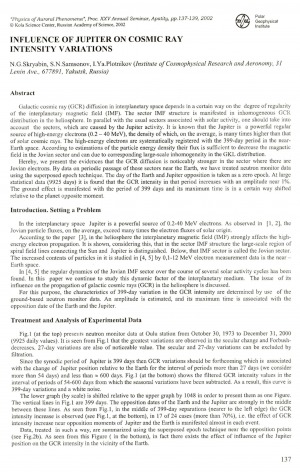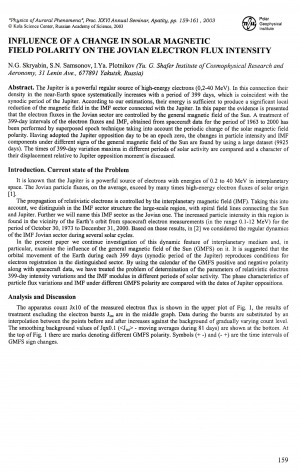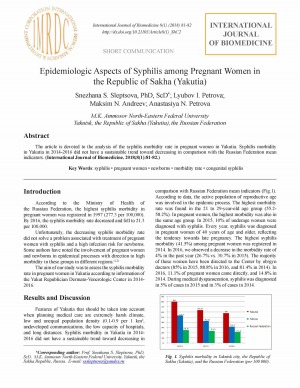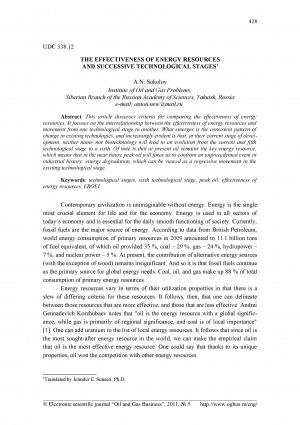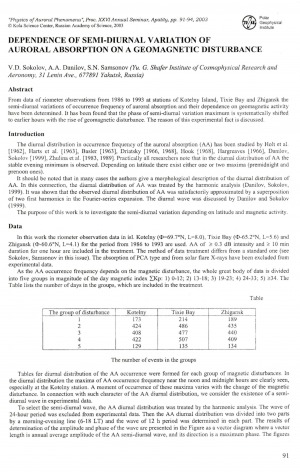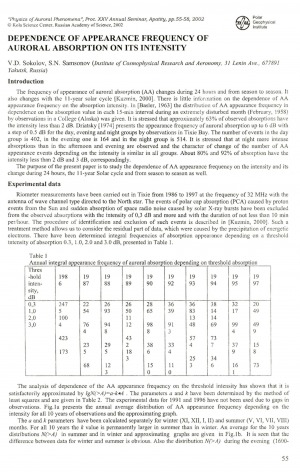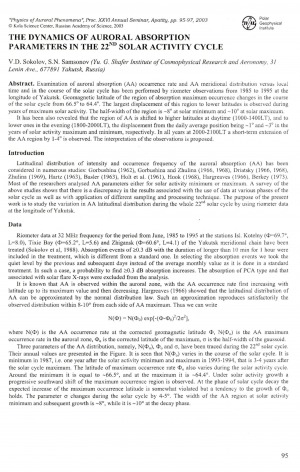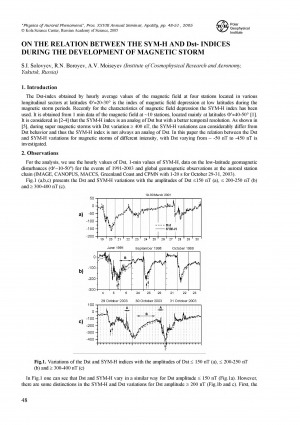Количество страниц: 10 с.
Semenov, M. E. Study of the methane hydrates obtaining process in static conditions / M. E. Semenov, E. Yu. Shitz // Нефтегазовое дело. - 2012, N 5. - С. 466-474.
Количество страниц: 24 с.
Shishkina, E. L. Method of Riesz potentials applied to solution to nonhomogeneous singular wave equations / E. L. Shishkina, S. Abbas // Математические заметки СВФУ. — 2018. — Т. 25, N 3 (99), июль-сентябрь. — С. 68-91.
DOI: 10.25587/SVFU.2018.99.16952
Количество страниц: 4 с.
Skryabin, N. G. Influence of Jupiter on cosmic ray intensity variations / N. G. Skryabin, S. N. Samsonov, I. Ya. Plotnikov // Physics of auroral phenomena : proceedings of the 25th annual seminar, Apatity, 26 February – 1 March 2002. – 2002. – P. 137-139.
Количество страниц: 3 с.
Skryabin, N. G. Influence of a change in solar magnetic field polarity on the Jovian electron flux intensity / N. G. Skryabin, S. N. Samsonov, I. Ya. Plotnikov // Physics of auroral phenomena : proceedings of the 26th annual seminar, 25 - 28 February 2003. – 2003. – P. 159-161.
Количество страниц: 2 с.
- Прикладные науки. Медицина. Ветеринария. Техника. Сельское хозяйство > Медицина > Патология. Клиническая медицина > Онкология,
- Прикладные науки. Медицина. Ветеринария. Техника. Сельское хозяйство > Медицина > Гинекология. Женские болезни. Акушерство,
- НАУКА ЯКУТИИ > ПРИКЛАДНЫЕ НАУКИ. МЕДИЦИНА. ТЕХНИКА. СЕЛЬСКОЕ ХОЗЯЙСТВО > Медицина > Гинекология. Женские болезни. Акушерство,
- НАУКА ЯКУТИИ > ПРИКЛАДНЫЕ НАУКИ. МЕДИЦИНА. ТЕХНИКА. СЕЛЬСКОЕ ХОЗЯЙСТВО > Медицина > Патология. Клиническая медицина > Онкология.
Epidemiologic Aspects of Syphilis among Pregnant Women in the Republic of Sakha (Yakutia) / Snezhana S. Sleptsova, Lyubov I. Petrova, Maksim N. Andreev [и др.] ; M. K. Ammosov North-Eastern Federal University // International journal of biomedicine. - 2018. - Т. 8, N 1. - C. 81-82. - DOI: 10.21103/Article8(1)_ShC2
DOI: 10.21103/Article8(1)_ShC2
Количество страниц: 12 с.
Sokolov, A. N. The effectiveness of energy resources and successive technological stages / A. N. Sokolov // Нефтегазовое дело. - 2011, N 5. - С. 428-438.
Количество страниц: 4 с.
Sokolov, V. D. Dependence of semi-diurnal variation of auroral absorption on a geomagnetic disturbance / V. D. Sokolov, A. A. Danilov, S. N. Samsonov // Physics of auroral phenomena : proceedings of the 26th annual seminar, 25 - 28 February 2003. – 2003. – P. 91-94.
Количество страниц: 4 с.
Sokolov, V. D. Dependence of appearance frequency of auroral absorption on its intensity / V. D. Sokolov, S. N. Samsonov // Physics of auroral phenomena : proceedings of the 25th annual seminar, Apatity, 26 February – 1 March 2002. – 2002. – P. 55-58.
Количество страниц: 3 с.
Sokolov, V. D. The dynamics of auroral absorption parameters in the 22nd solar activity cycle / V. D. Sokolov, S. N. Samsonov // Physics of auroral phenomena : proceedings of the 26th annual seminar, 25 - 28 February 2003. – 2003. – P. 95-97.
Количество страниц: 4 с.
Solovyev, S. I. On the relation between the SYM-H and Dst- indices during the development of magnetic storm / S. I. Solovyev, R. N. Boroyev, A. V. Moiseyev // Physics of auroral phenomena : proceedings of the 28 th annual seminar, 1-4 March 2005. – 2005. – P. 48-51.
